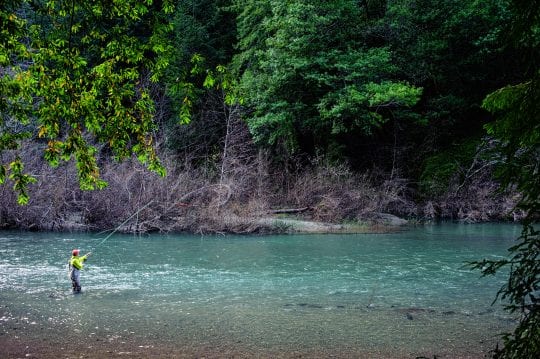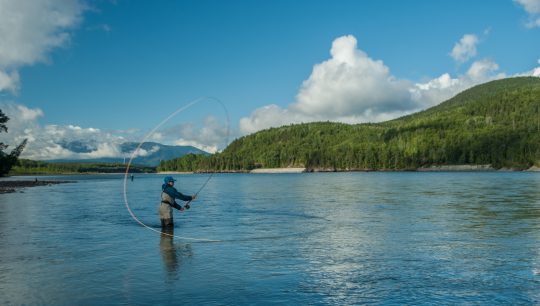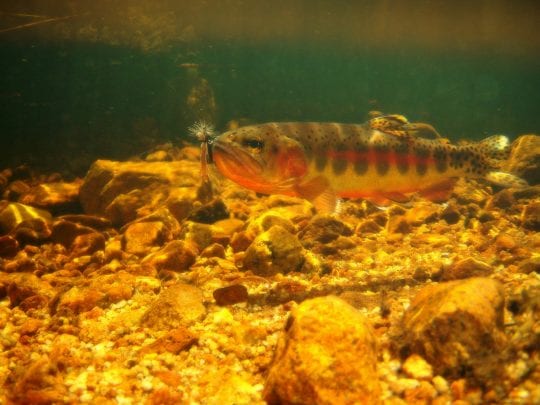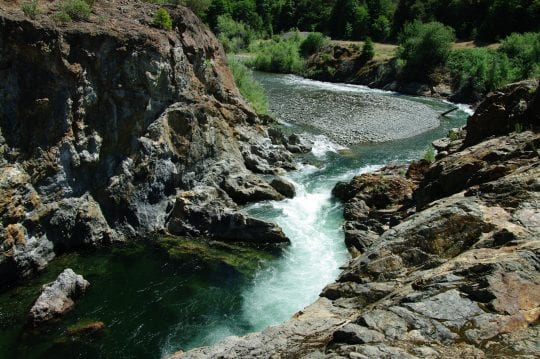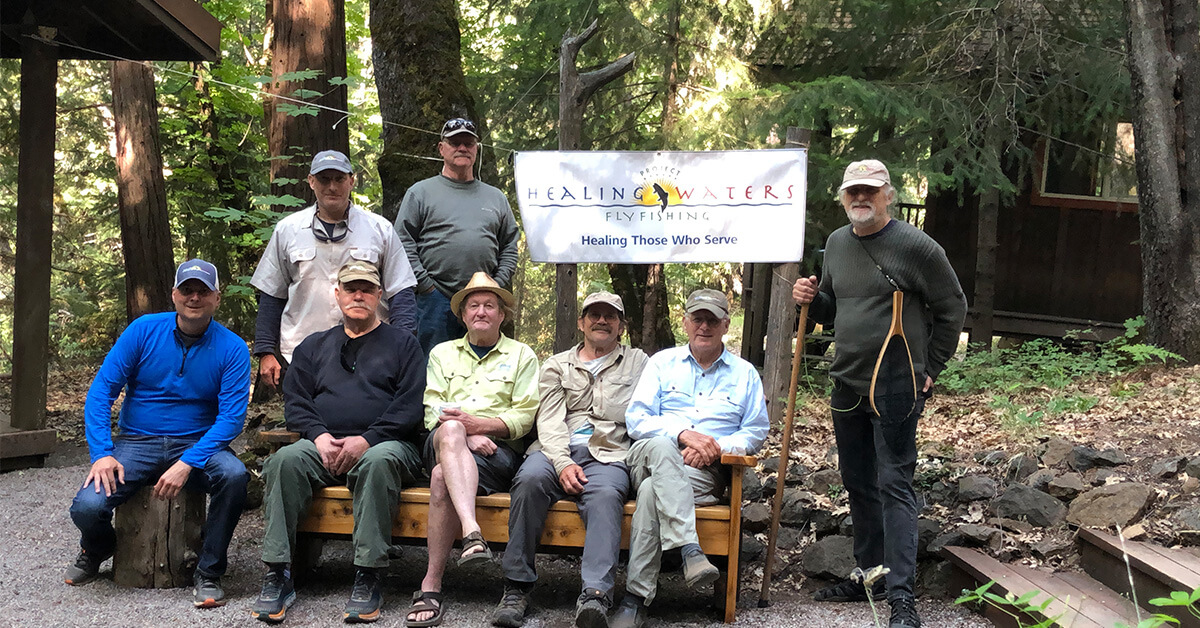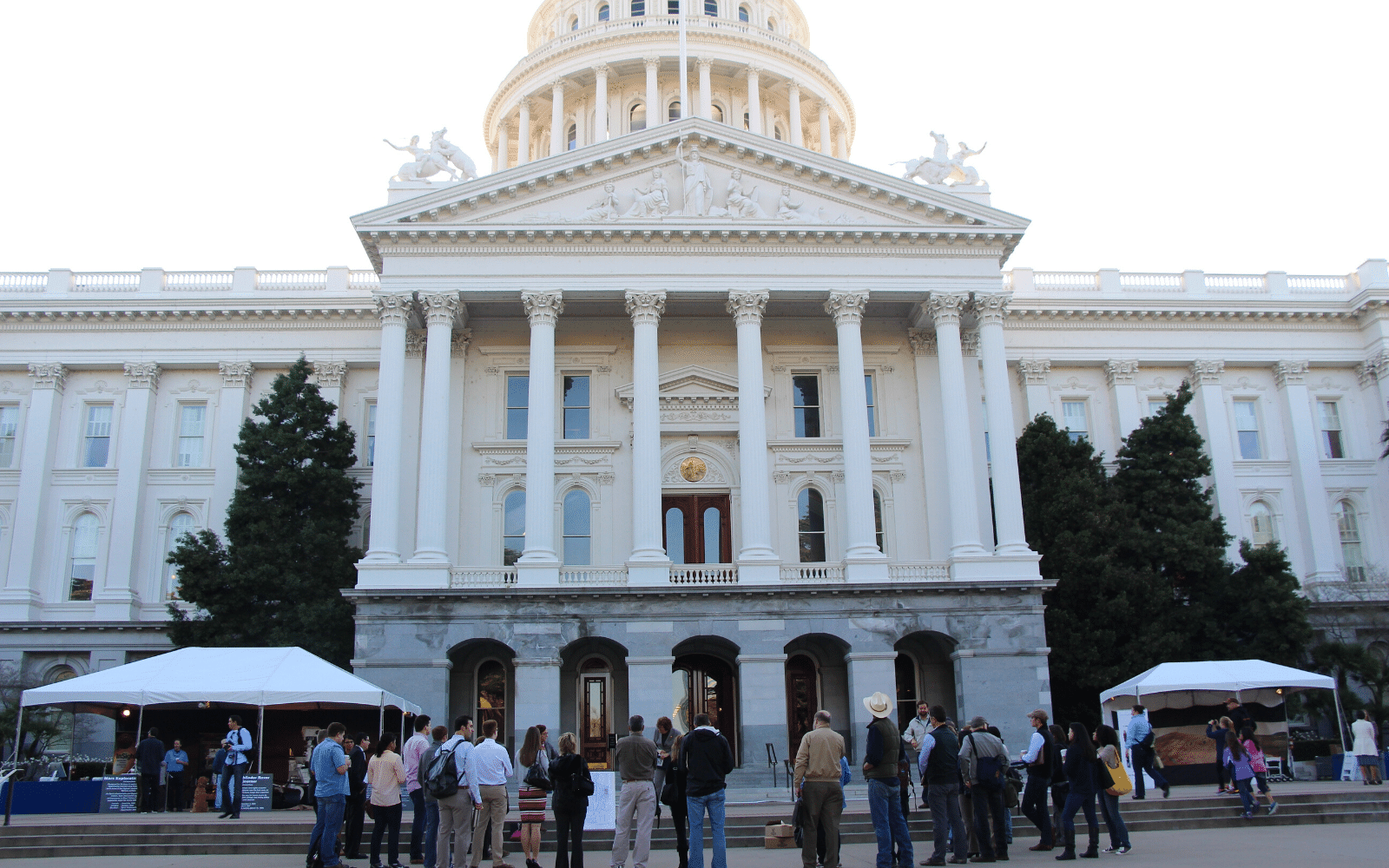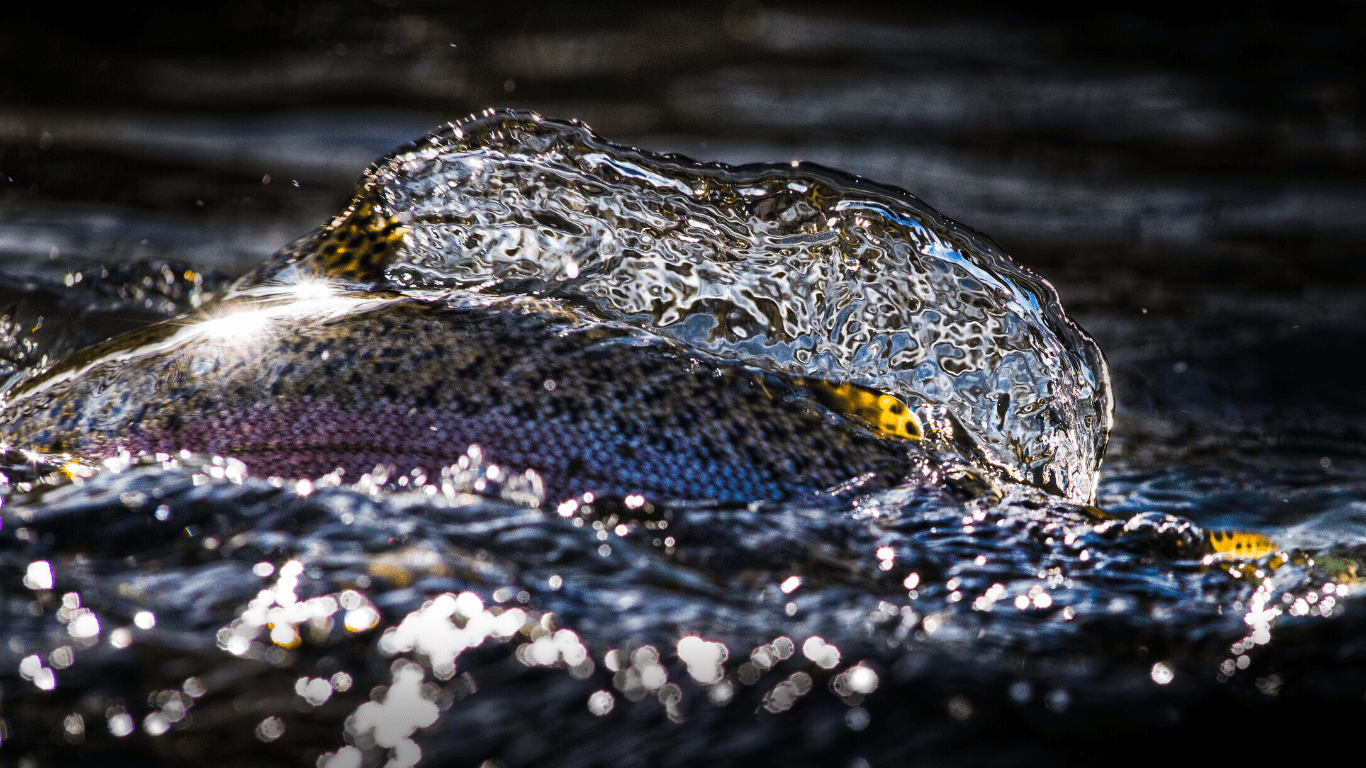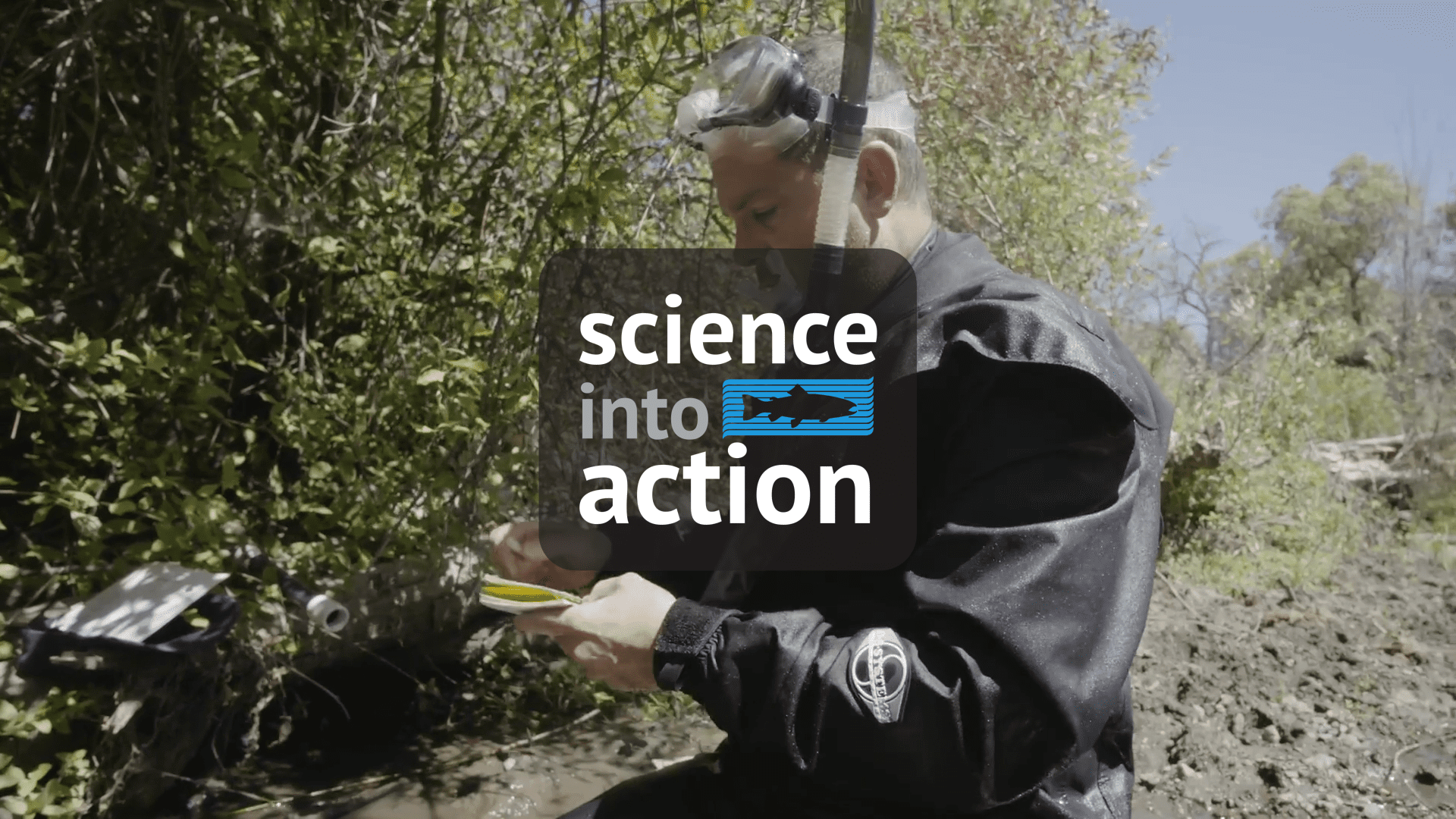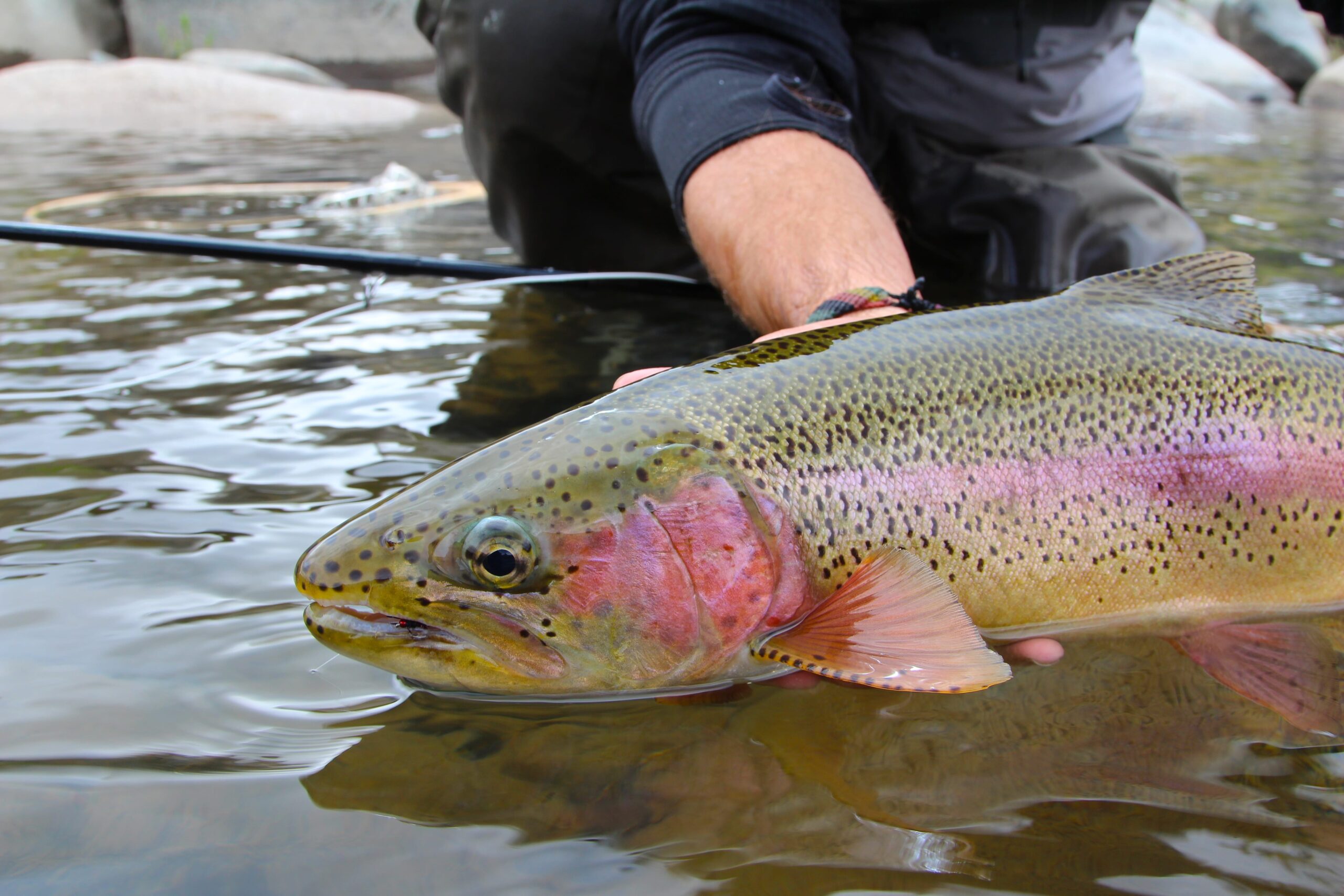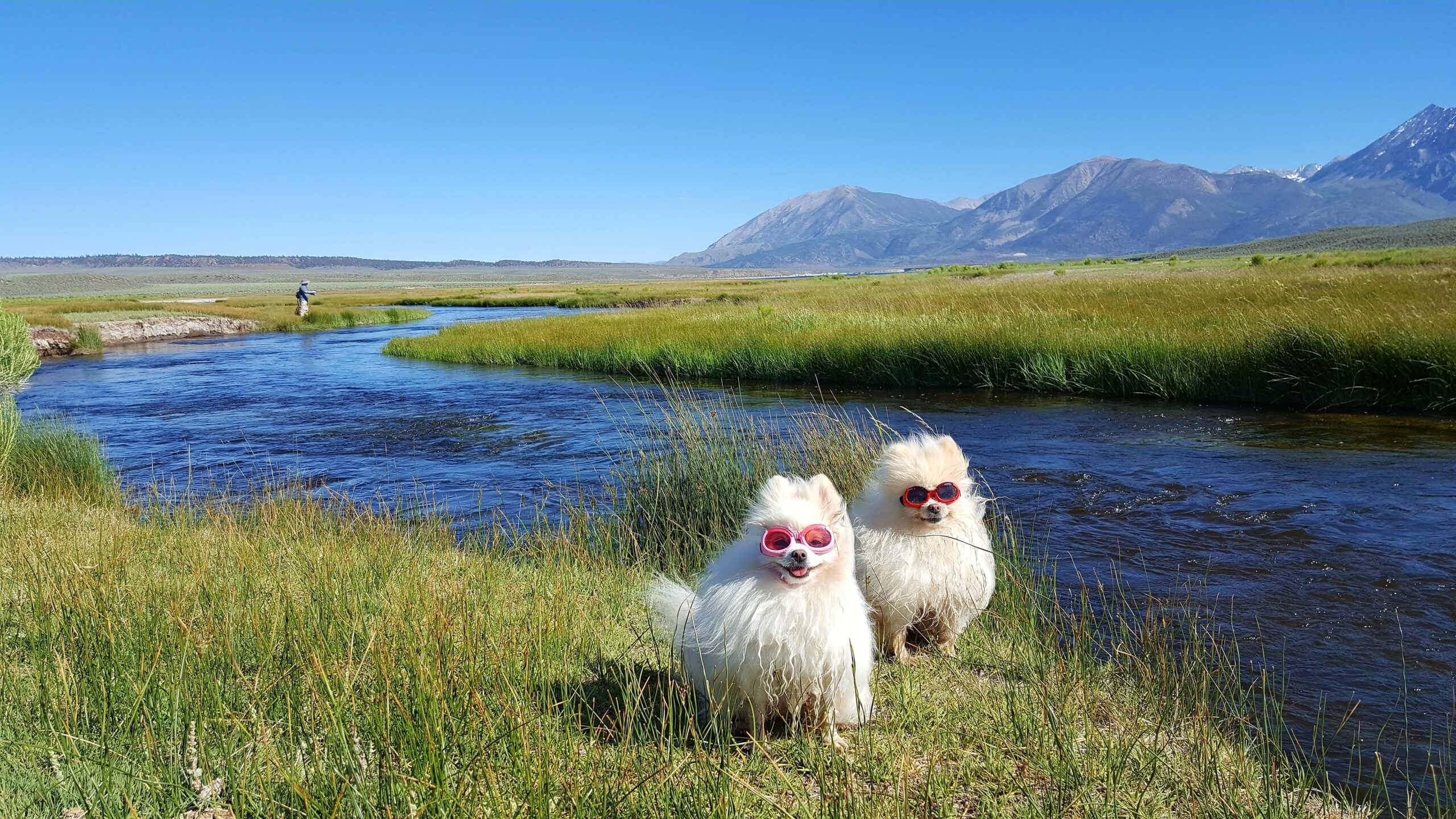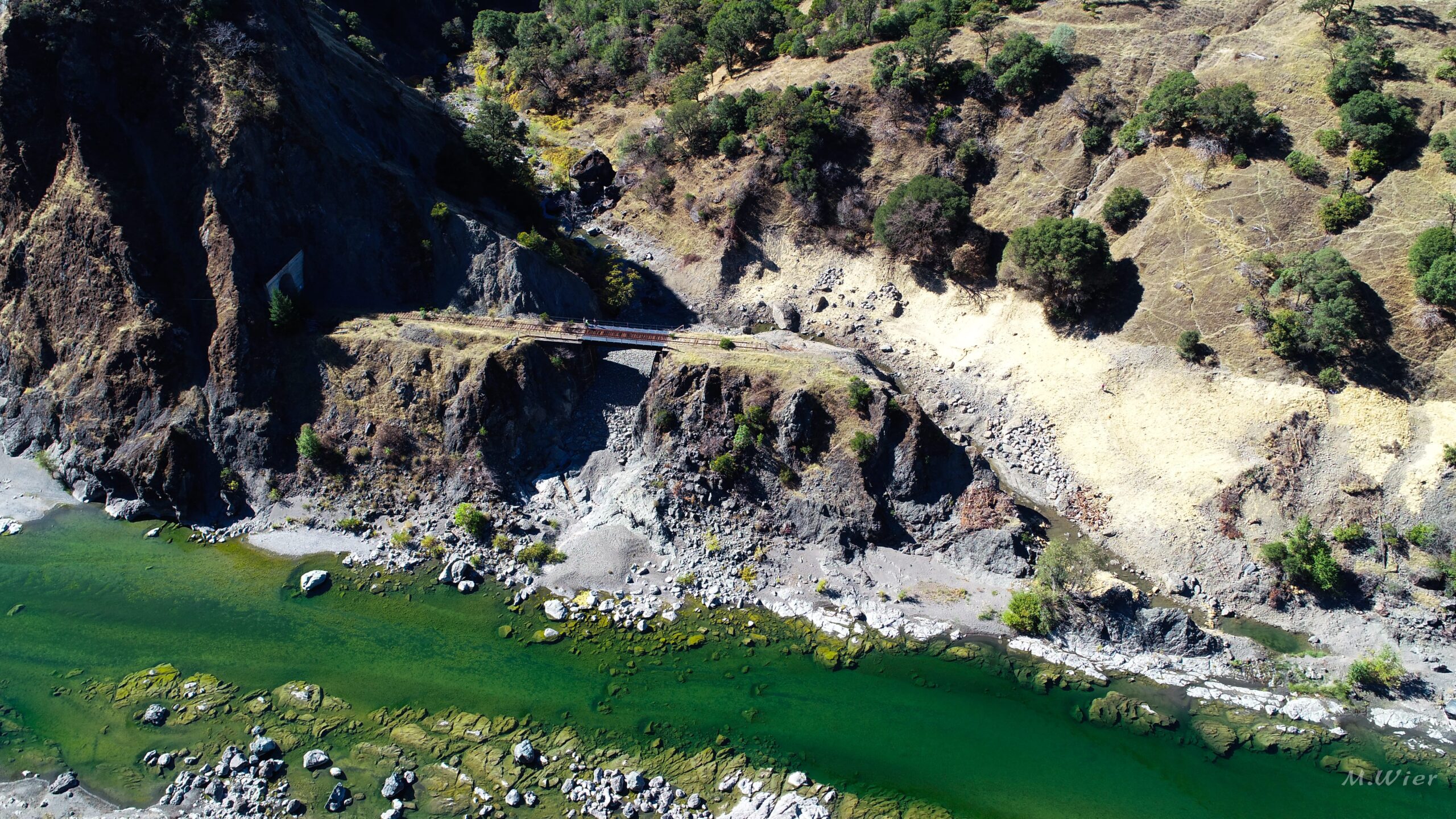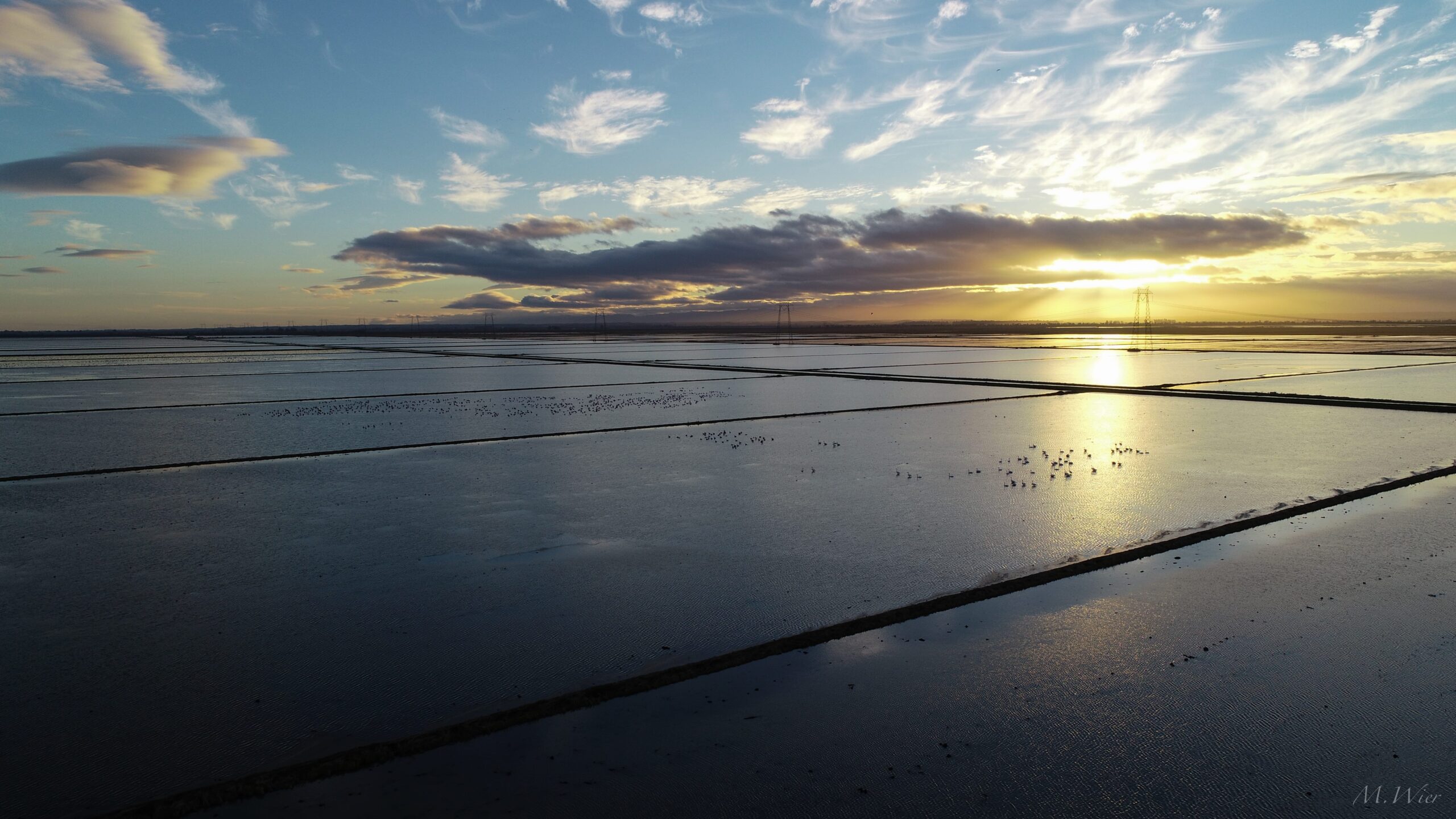By Patrick Samuel,
Bay Area Program Manager
Background
Last winter, CalTrout worked to engage you, our members, lodges, guides, fishing businesses, fly fishing clubs, biologists, researchers, and our partners to weigh in on the inland trout fishing regulation simplification process the California Department of Fish & Wildlife (CDFW) is leading.
You may recall our social media, website, Trout Clout, and other efforts requesting your input and sharing our thinking on the subject.
Based on input from these groups, we wrote our formal comment letter to highlight our philosophies on trout management.
We feel it is our duty as stewards to lead on this issue, as it was California Trout that introduced legislation nearly a half century ago to create the Wild & Heritage Trout Program within CDFW in 1971, and helped create widespread adoption of catch and release angling ethic that same year.
Cover Photo: "Owens River" by Gayle Soskolne

Our intent was to raise concerns to adequately protect native trout species and sensitive wild trout fisheries from unnecessary impacts associated with increased harvest or angling pressure.
We sought to balance this approach with the desire to provide increased opportunities to get anglers on the water and harvest fish where the local population or stocking could sustain such harvest.
With that in mind, we lay out a timeline, process overview, outcomes assessment, and share some of our rationale in continuing to engage in this effort and note the opportunities for continuing public input in the process.
Photo: Glenn Kubacki
Timeline
In March 2019, CDFW released its proposed draft trout fishing simplification regulations.
This effort was initially started in 2012 as a way to decrease the over 200 special regulations affecting trout fishing in California beyond the simple statewide 7.0 regulation, simplify them, and encourage more anglers to get on the water all while protecting our public trust resources.
Sounds simple enough, right? You may remember we requested your input and provided forms for you to raise your voices on this effort, and they were heard.
We went to Sacramento with our partners at Trout Unlimited to sit down with CDFW staff to discuss our concerns and suggestions in person and were assured there would be more opportunity to collect public input.
After receiving over 5,000 formal comments submitted electronically and in-person at multiple statewide hearings, hundreds of phone calls, letters, etc., CDFW decided to slow the adoption of any proposed changes, which were scheduled for adoption in summer 2019, and take a closer look at this issue to adequately address the comments they received and make changes to the proposals.
In February 2020, California Department of Fish & Wildlife (CDFW) re-engaged the public by releasing their draft regulation changes based on the enormous public comment they received.
At the end of February, we sat down for a second time in person with our partners at TU and CDFW to provide input and examples of rationale for continued changes we felt would better balance our priorities and trout management in the future.
We walked through a list of waters in the state with economic, social, safety, biological, and other information to temper the proposed regulations in these places to try to come to agreement over better serving management and simplification goals without putting wild trout fisheries at unnecessary risk of overharvest.
CDFW just released its latest draft inland trout fishing regulations for public review and comment, which is open now.
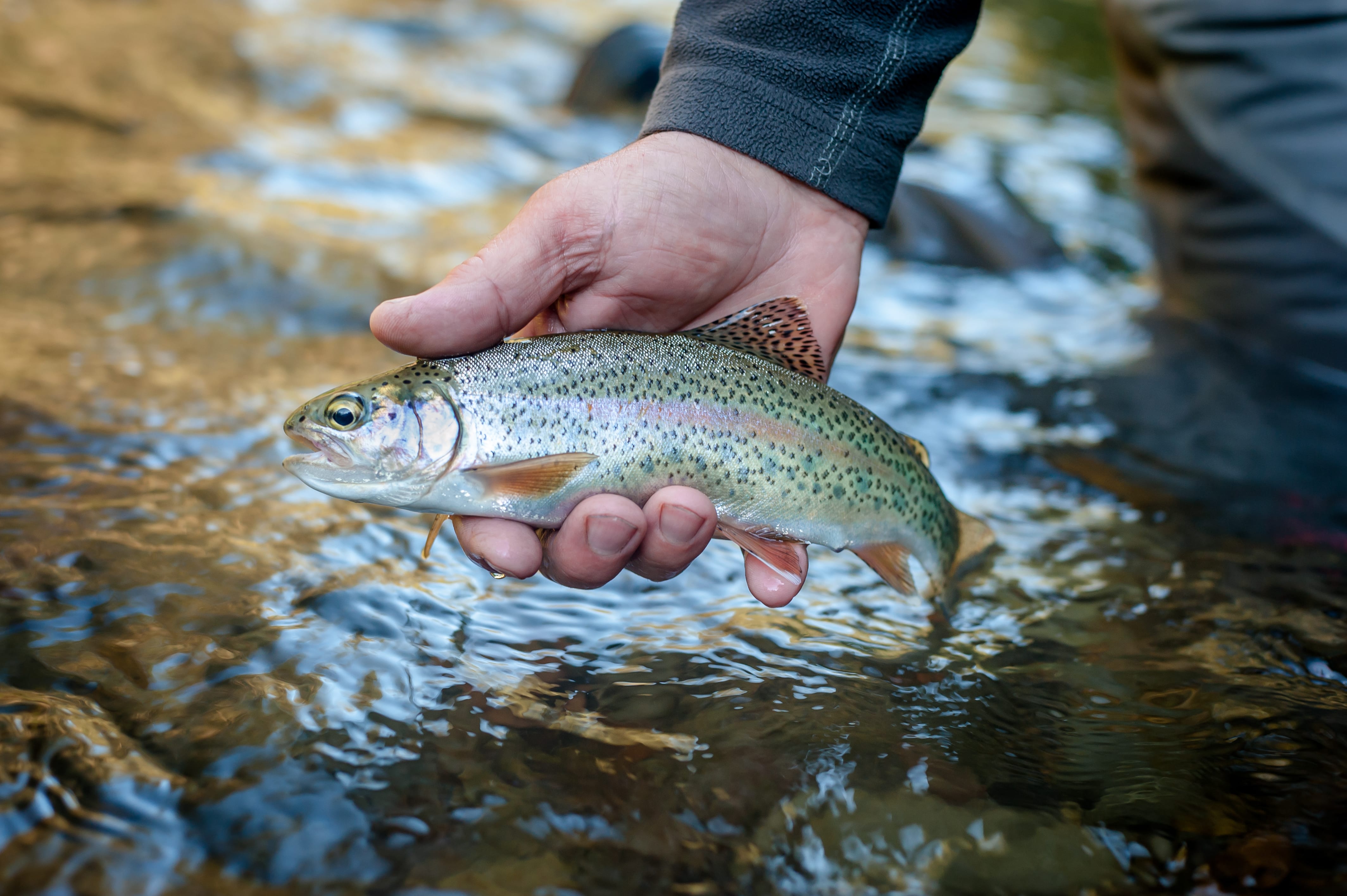
In mid-April, Mike Wier and I went on the Barbless podcast together with our partner Sam Sedillo at Trout Unlimited to discuss the trout fishing regulation simplification process, the timeline and steps, and future opportunities for public input on this issue.

You can listen to the episode here:
California's Proposed Fishing Regulations - Some Perspective
In June, the first of three Fish & Game Commission Meetings will be held to address the topic, where members of the public can give input on the regulation simplification process or waters they feel have draft regulations that are missing the mark.
The trout fishing regulation changes adopted at the October meeting are planned to take effect in 2021.
Photo: Dominic Bruno
Process
By careful design, any regulation changes must occur within the California Fish and Game Commission three-part process. The three-part process entails a primary notice meeting, a meeting to receive public comment and debate the staff recommendation provided to the Commission, and a third meeting to endorse and vote to accept formal changes to go into effect. For this regulation simplification meeting, the Fish & Game Commission meeting schedule is
- June 24 and 25, Santa Ana – Notice Meeting
- August 19 and 20, Fortuna – Discussion Meeting
- October 14 and 15, Oakland – Vote/Adoption Meeting
The plan right now is for these meetings to be held as planned on the Fish and Game Commission website but they are virtual meetings hosted remotely due to concerns with the coronavirus.

Public Input
There are still open to the public to follow along, and there are still opportunities to submit public comment formally at the meeting with prior registration on the website.
You can pre-register to read or submit written comment at these Commission meetings, and you can write to any of the Commissioners themselves. You may choose to do both.
If you want your comments and input to be most effective, please consider framing your suggestions in terms of options that are “on the menu” already, e.g. they fit within the proposed options for season, bag, gear type limitations to get the most traction.
Advocacy
Throughout this process, we advocated for a model of management that matches the stated management goals with the appropriate tools to achieve the desired results, not a piecemeal approach to every single water in the state.
As we worked through the overarching issues, we eventually drilled down to use several waters as examples for a management approach we were advocating for.
We leaned on our work and those of our partners to inform changes such as on the Truckee Fall rivers and several lakes with large spawning aggregations of trout moving into tributaries seasonally.
Where we have cooperative science ongoing with CDFW as in the Fall River, we were able to show that rainbow trout use interconnected springs, tributaries, lakes, and other waterways in the Fall River complex to spawn year-round.
With this information in hand, we were able to apply the science to policy and successfully lobby for a unified regulation that would reflect this unique life history and protect these fish from potential overharvest.
Some other proposed regulations were changed with different approaches. For example, several proposed regulations were tempered with social, economic, safety, enforcement, and other considerations such as increased potential to damage sensitive habitats from increased foot traffic, littering, poaching, or others, especially those in more rural or remote areas on the East Side.
With this combination of approaches, we were successfully able to make our case that proposed regulations should be changed to keep things like Opening Day intact in rural communities that rely upon them for business and to prohibit fishing in the middle of winter to keep people from falling through ice or unnecessarily straining limited Warden capacity for enforcement when different hunting seasons were commanding their attention.
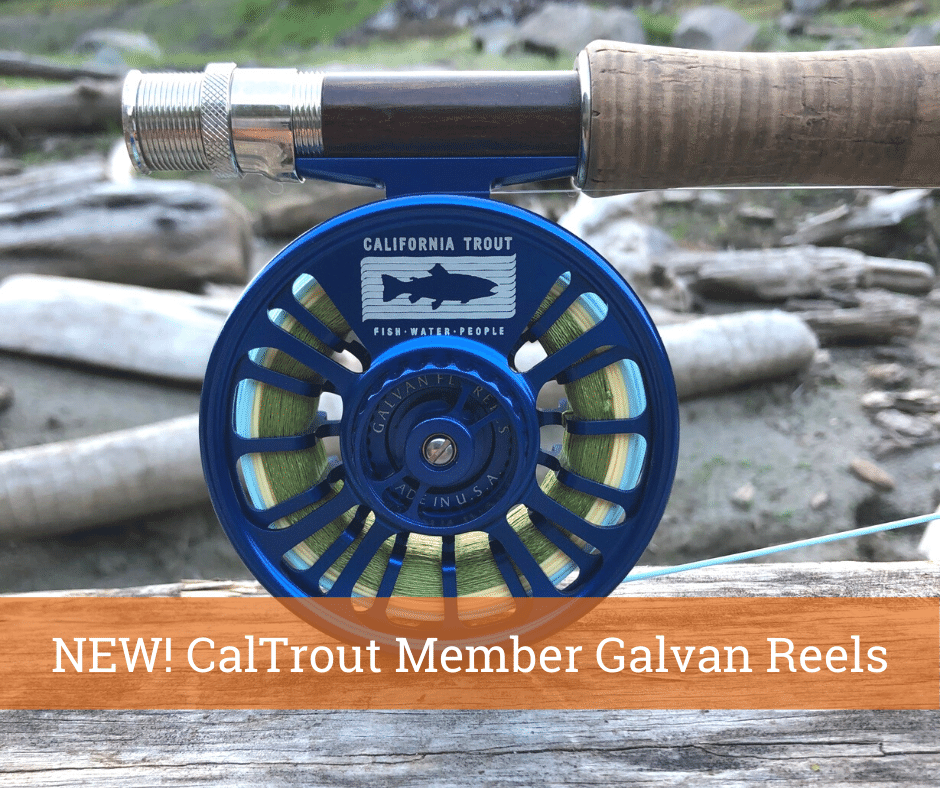
Get your own Galvan Torque T5 Reel with custom CalTrout logo and save fish at the same time! Proceeds support our conservation efforts. As the premier reel in the Galvan range, the Torque Series reels represent the culmination of a lifetime of fly-fishing and passion for reel design. Simply stated, it represents the very best of modern fly reel architecture. Get yours here (limited quantity).
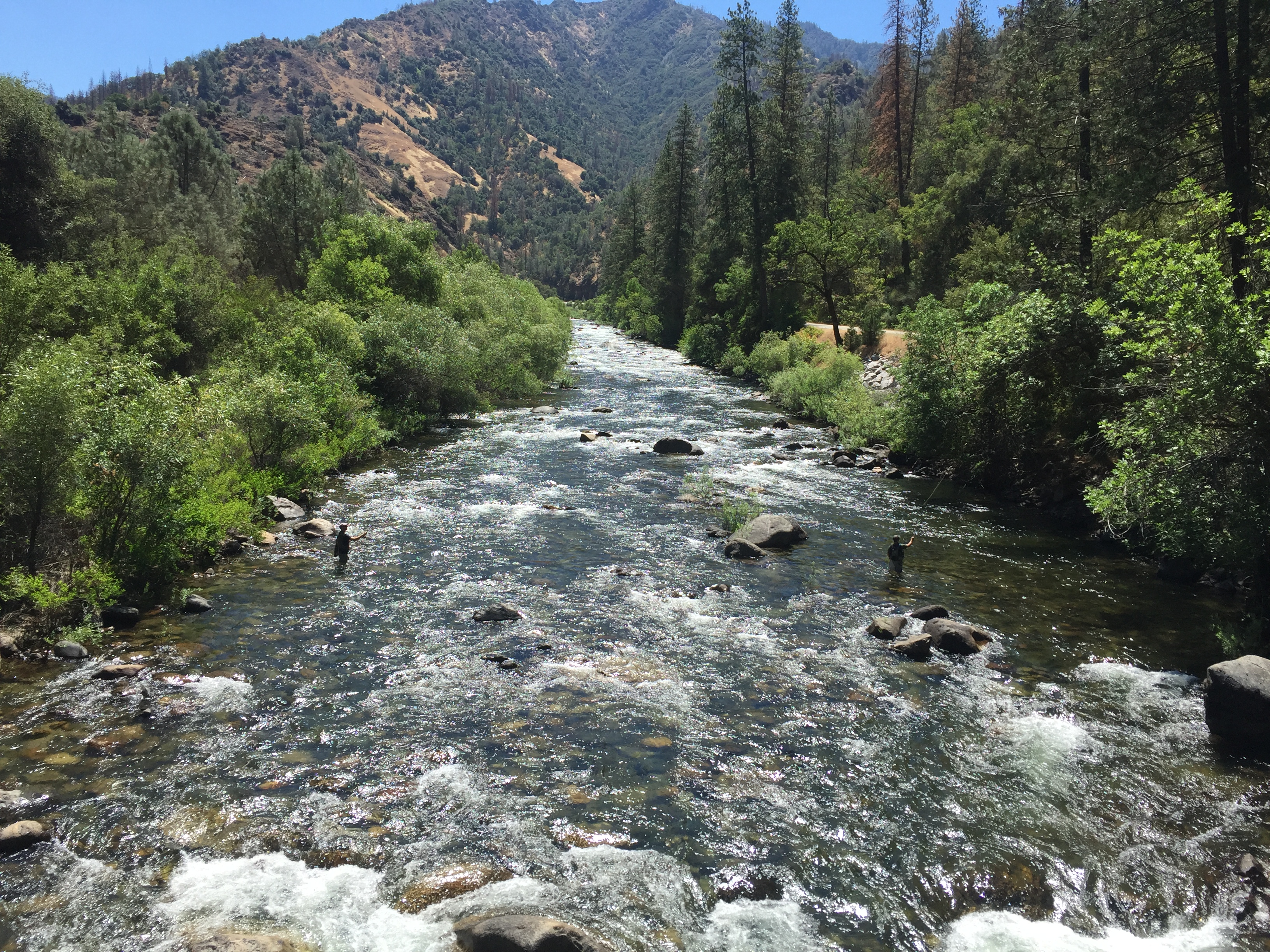
Outcomes
Needless to say, our varied fisheries that make California such a special place for anglers can have multiple and sometimes conflicting goals and management approaches to suit those goals, and so it has proven challenging to balance different interests in a state with 40 million people.
Despite these challenges, we view the trout regulation simplification as a critical opportunity to help ensure that wild fish thrive in healthy waters for a better California.
Toward that end, we have consistently advocated for reducing impacts to wild trout fisheries and especially those with sensitive native trout species, such as Lahontan cutthroat trout or those in high elevation wilderness areas with short growing seasons and small populations.
At the same time, we have worked to secure increased angling opportunities and harvest in still water environments or those with regular stocking that can sustain such harvest.
Photo: Phil Wang
Taken in concert, we feel that the latest revision of the trout fishing regulations strike a much better balance between these different considerations than the initial draft released last year, and are glad to see many of the changes we recommended showing up in the revised proposal, such as the change to the statewide 7.0 regulation that reflects a need to better protect spawning fish:
- Still Waters and Lakes:
- Open year round, 5 trout limit, no gear restrictions
- Rivers and Streams:
- Last Saturday in April to Nov. 15: 5 trout limit;
- November 16 to last Friday in April: 0 trout limit, artificial lures with barbless hooks
Many areas that had artificial lure requirements prior now mandate the use of barbless hooks on those lures, helping to reduce any incidental mortality or sublethal impacts from hooking and playing trout.
At the same time, there are some catch and release only waters that are being lost in this effort from our perspective, and not all of the effective management tools we’ve advocate for (slot limits to protect larger spawning broodstock and juvenile, immature fish) have been included “on the menu.”
A few waters we are still working to get amended (East Walker, East Carson, Upper Sacramento, and Mokelumne) require more effort to better protect thriving wild trout fisheries there where they co-exist with stocking. We feel these areas do not have adequate regulations in place to do so as written.
In general, the astute angler will notice a trend of opening up more waters in the state to fishing for more of the year, but with restricted times (typically summer, when angling pressure is highest) when barbed hooks or lures may be used to harvest trout.
This approach was put forward by CDFW to balance the desire to provide angling opportunity to get more people on the water, while protecting vulnerable spawning fish during spring (rainbow, cutthroat, brook trout) and fall (brown trout) months.
In general, lakes and reservoirs will have more generous bag and possession limits that moving waters to protect more concentrated populations that are more susceptible to overharvest.
While we did not advocate for year-round trout angling, we feel that opening up some waters to catch and release angling in seasons that were not open before is a good way to get more people engaged in fishing and to spread angling pressure among many waters to help protect wild fish.
There are also generally strict regulations in waters that sustain our imperiled native trout species, such as McCloud River redbands and California golden trout, that with proper enforcement are likely to protect them from significant impacts from angling: we are working tirelessly with our partners statewide on the other threats they face.
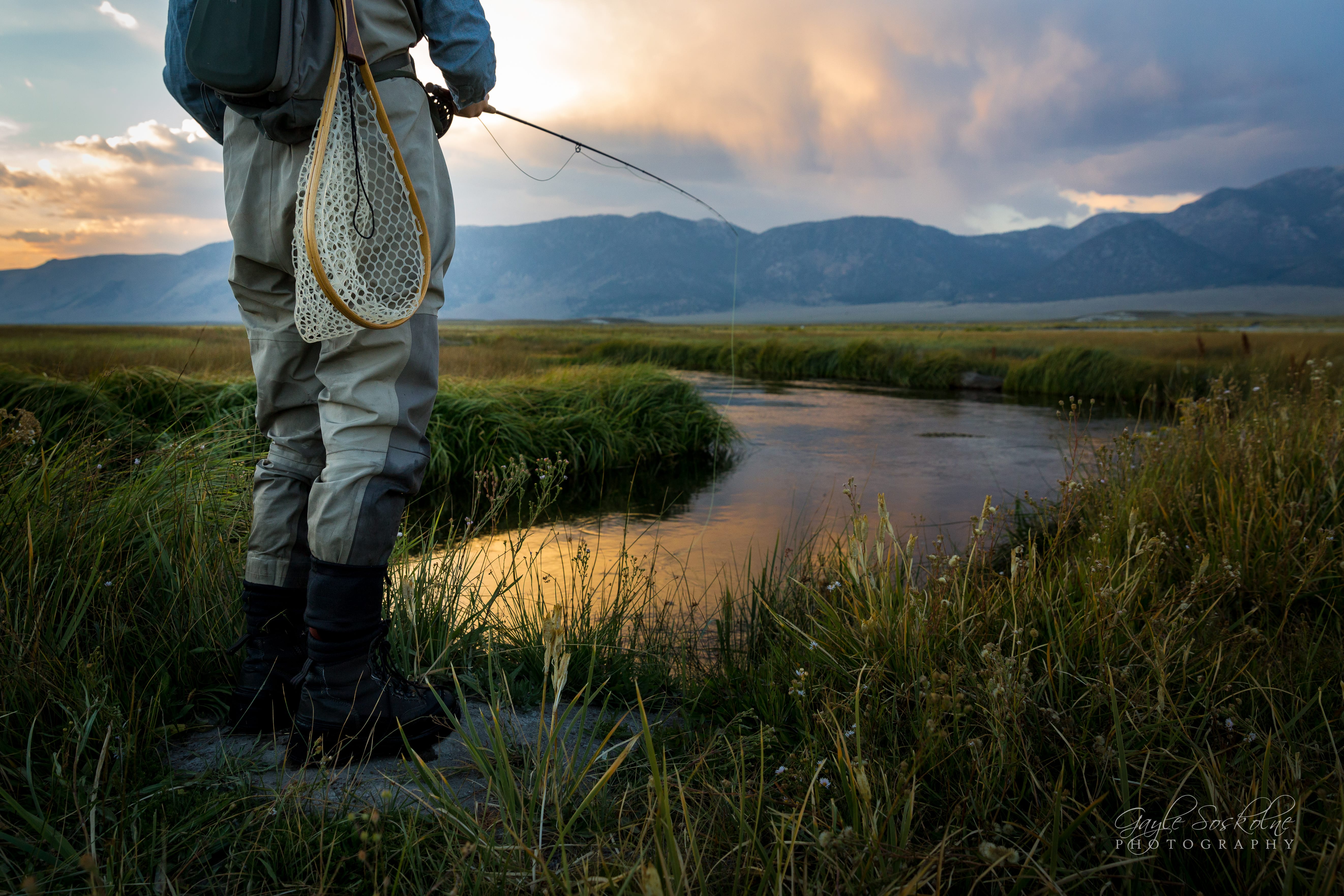
Closing
Now more than perhaps ever, when it is safe to do so, we encourage you to all get out and fish – and when you do, take a kid with you.
It is perhaps the best thing we can all do to support our great trout fishing in California and take our minds off other things for awhile.





